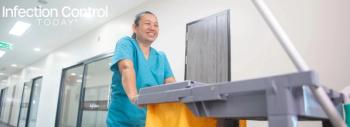
Trial Finds More Support for Universal HIV Screening in Emergency Departments
Screening everyone for HIV in the emergency department may be superior to testing only those with apparent risk, when trying to identify patients with undiagnosed HIV infection, according to a new results by researchers at the University of Cincinnati (UC).
Although the Centers for Disease Control and Prevention (CDC)Â and national research organizations have recommended universal HIV screening, lead author Michael Lyons, MD, says there is still disagreement among physicians on how to implement screening in the nations already busy emergency departments. Lyons, an assistant professor of emergency medicine, directs UCs HIV Early Intervention Program, which provides HIV screenings in the University of Cincinnati Medical Center emergency department and in community-based settings around Cincinnati.
Proponents of targeted testingwho argue that it is more beneficial to perform fewer tests but have more tests be positivesay limiting HIV screening to those with identified risk reduces the number of tests emergency departments have to perform, saving time and cost.Â
Opponents say that targeting only those at risk is insufficient because it misses cases. However, Lyons says, previous trials do not delineate whether cases have been missed because testing criteria are limited or because screening was not applied to enough patients to provide clear results.
"More selective HIV screening is thought to miss more cases, but there have never been well-designed comparison studies on which targeting criteria are best, he says, "so with this study, we hypothesized that by using very broad criteria and applying sufficient resources to test everyone who met those criteria, we could detect nearly as many cases as universal screening but still use many fewer tests.
In the randomized trial, patients receiving universal screening were offered an HIV test regardless of their risk factors. For patients randomized to targeted screening, researchers intentionally set very broad parameters, offering HIV testing for any possible risk indicator that could be identified, many more criteria than are usually considered.
There were 9,572 patients approached to offer screening. Contrary to expectations, targeted screening did not diagnose nearly as many patients and did not require that many fewer tests.
For patients screened universally, approximately 40 percent consented to testing and six patients were newly diagnosed.Â
For patients receiving targeted screening, 47 percent consented and three patients were newly diagnosed. Overall, Lyons says the number of tests saved by targeting led to similar reductions in new cases detected.
"This shows that this method of targeted screening, using with broadest possible selection criteria, offers no important advantage over universal screening, says Lyons. "We will need other studies to discover whether some other method of selecting patients for HIV screening could succeed, where this method did not, in limiting testing while still detecting most cases.
Â
The teams results, "Randomized Comparison of Universal and Targeted HIV Screening in the Emergency Department, are published online ahead of print in the Journal of Acquired Immune Deficiency Syndromes.
Co-authors include: Christopher Lindsell, PhD; Andrew Ruffner; Beth Wayne; Kimberly Hart; Matthew Sperling; Alexander Trott, MD; and Carl Fichtenbaum, MD.
Newsletter
Stay prepared and protected with Infection Control Today's newsletter, delivering essential updates, best practices, and expert insights for infection preventionists.






